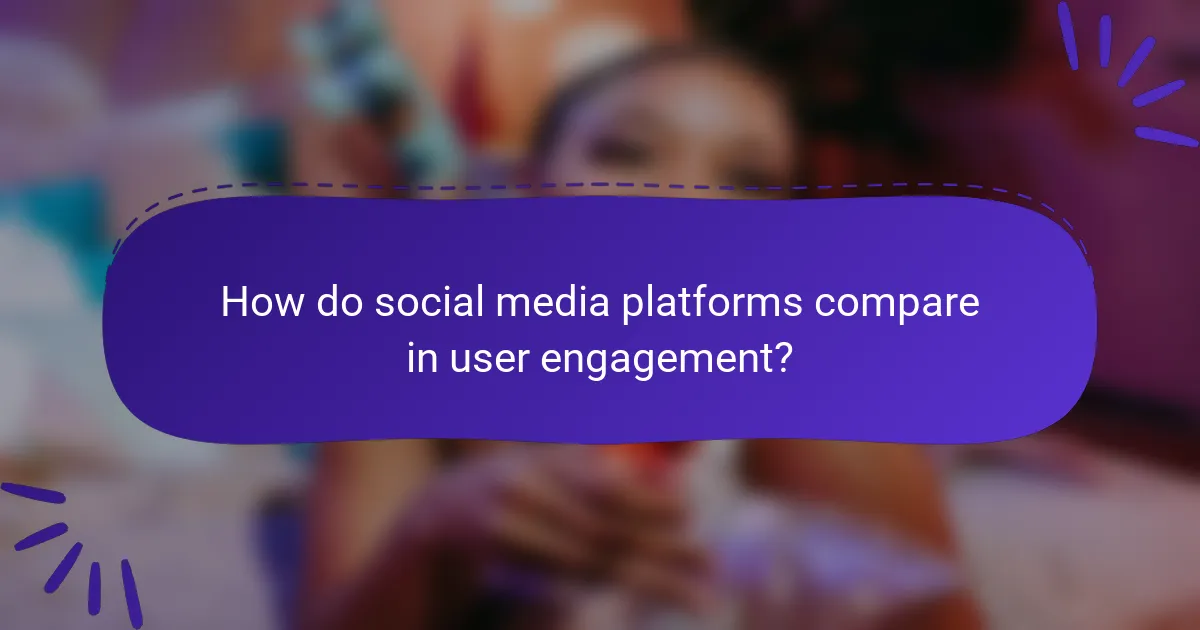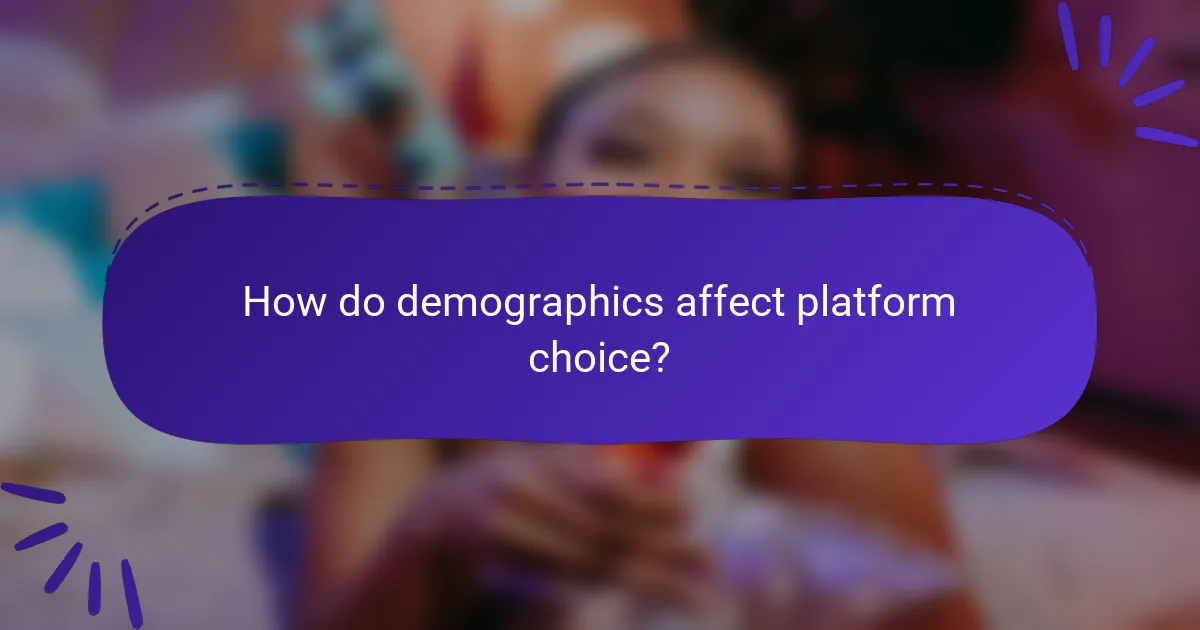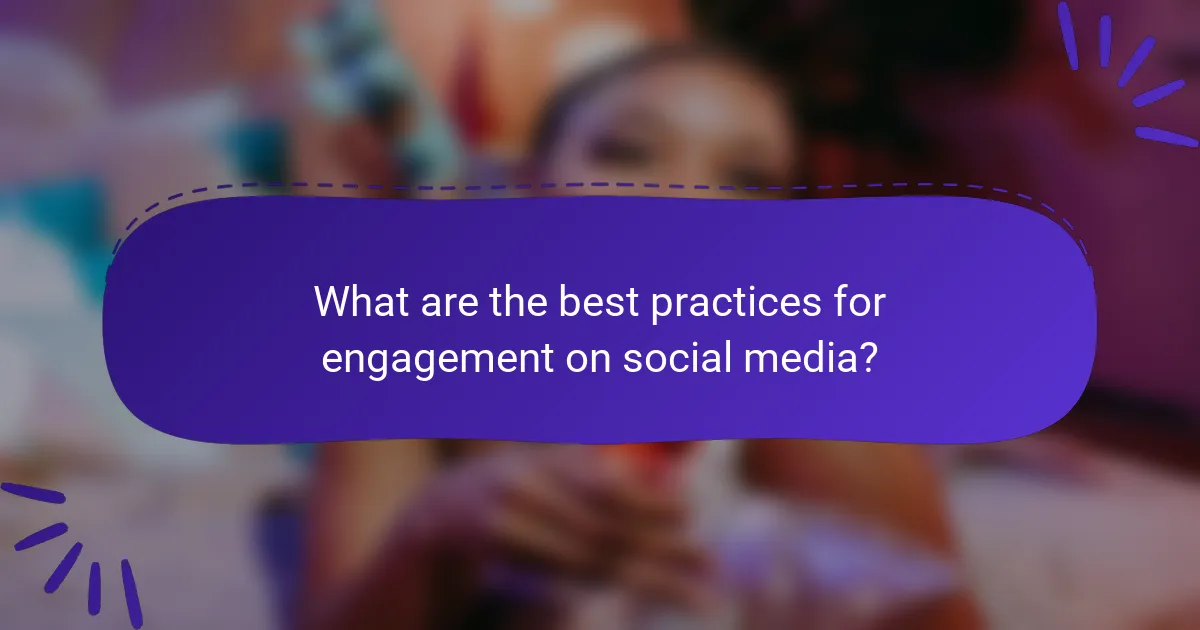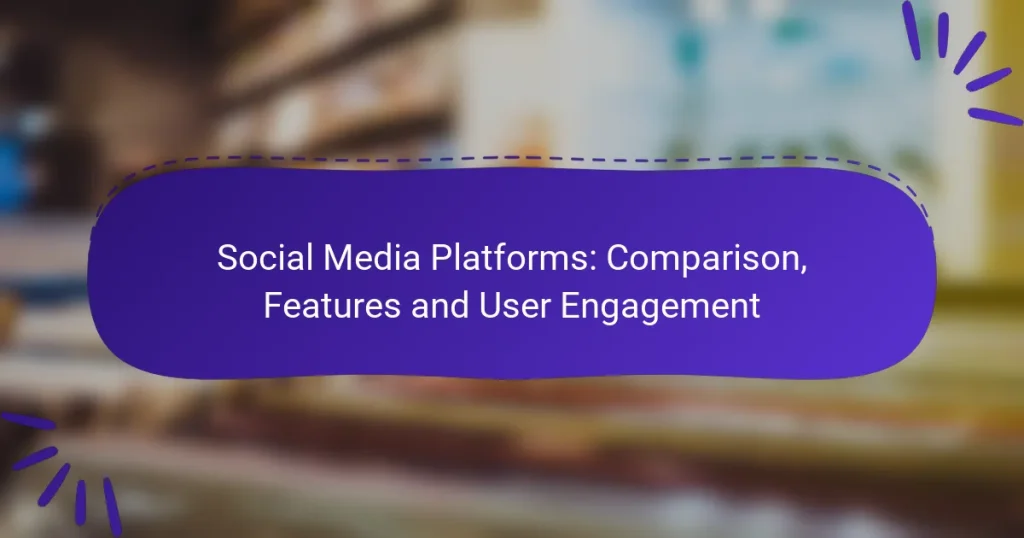Social media platforms play a crucial role in e-commerce, each offering distinct features that cater to different audiences and marketing strategies. Understanding the variations in user engagement and the specific tools available can help businesses optimize their online presence and enhance customer interactions. By focusing on platforms that provide effective advertising and shopping integrations, e-commerce brands can significantly improve their visibility and sales performance.

Which social media platforms are best for e-commerce?
The best social media platforms for e-commerce include Facebook, Instagram, Pinterest, LinkedIn, and Twitter, each offering unique features to enhance online sales. Choosing the right platform depends on your target audience and marketing strategy.
Facebook for targeted advertising
Facebook is a powerful tool for e-commerce due to its advanced targeting capabilities. Businesses can create ads that reach specific demographics, interests, and behaviors, maximizing the chances of conversion.
Utilizing Facebook’s ad manager, you can set budgets and schedule ads to run during peak engagement times. Consider using carousel ads to showcase multiple products, which can increase user interaction and sales.
Instagram for visual marketing
Instagram excels in visual marketing, making it ideal for brands with strong imagery. The platform allows businesses to showcase products through posts, stories, and reels, creating an engaging shopping experience.
Using shoppable posts enables users to purchase directly from your images, streamlining the buying process. Aim for high-quality visuals and consistent branding to attract and retain followers.
Pinterest for product discovery
Pinterest is particularly effective for product discovery, as users often browse for inspiration before making purchases. This platform is ideal for e-commerce brands that offer unique or visually appealing products.
Creating eye-catching pins linked to your product pages can drive traffic and sales. Utilize rich pins to provide additional information directly on the pin, enhancing user engagement and interest.
LinkedIn for B2B engagement
LinkedIn is the go-to platform for B2B engagement, making it suitable for companies targeting other businesses. It allows for professional networking and sharing industry-related content to build authority and trust.
Consider using LinkedIn ads to reach decision-makers in specific industries. Sharing case studies and whitepapers can also establish your brand as a thought leader, encouraging potential clients to engage with your offerings.
Twitter for real-time interaction
Twitter is effective for real-time interaction and customer service, allowing brands to engage directly with their audience. Quick responses to inquiries can enhance customer satisfaction and loyalty.
Utilize Twitter polls and threads to encourage engagement and gather feedback. Regularly sharing updates, promotions, and industry news can keep your audience informed and interested in your brand.

How do social media platforms compare in user engagement?
Social media platforms vary significantly in user engagement, which refers to the level of interaction users have with content. Factors such as platform design, audience demographics, and content types influence these engagement levels.
Engagement rates on Facebook
Facebook typically sees engagement rates ranging from 0.5% to 3% for posts, depending on the content type and audience. Posts with images or videos generally perform better than text-only updates. Businesses should focus on creating shareable content to boost visibility and interaction.
To enhance engagement, consider using Facebook Stories or live videos, which often receive higher interaction rates compared to standard posts. Regularly analyzing insights can help identify what resonates with your audience.
Instagram’s high interaction levels
Instagram boasts some of the highest engagement rates among social media platforms, often exceeding 3% to 6% for brands. The visual nature of Instagram encourages users to interact through likes, comments, and shares. High-quality images and engaging captions are crucial for maximizing interaction.
Utilizing Instagram Stories and Reels can further increase engagement, as these features are designed for quick, captivating content. Collaborating with influencers can also drive higher interaction levels by tapping into their established audiences.
Pinterest’s unique user behavior
Pinterest users exhibit distinct engagement patterns, often using the platform for inspiration and planning. Engagement rates can vary, but users typically save or share pins, leading to a unique form of interaction that focuses on discovery rather than immediate feedback.
To effectively engage Pinterest users, create visually appealing pins that link to valuable content. Regularly updating boards and utilizing keywords can enhance visibility and encourage user interaction. Understanding the platform’s search functionality is essential for maximizing reach and engagement.

What features should e-commerce businesses look for?
E-commerce businesses should prioritize features that enhance visibility, streamline transactions, and improve customer engagement on social media platforms. Key elements include robust advertising tools, effective shopping integrations, and user-friendly interfaces that facilitate a seamless shopping experience.
Advertising tools and analytics
Effective advertising tools are essential for e-commerce businesses to reach their target audience. Look for platforms that offer advanced targeting options, such as demographic filters and retargeting capabilities, to maximize ad spend efficiency. Analytics features should provide insights into campaign performance, allowing businesses to adjust strategies based on real-time data.
Consider platforms that offer A/B testing for ads, enabling you to compare different versions and optimize for higher conversion rates. Additionally, ensure that the platform provides comprehensive reporting tools to track key metrics like click-through rates and return on ad spend.
Shopping features and integrations
Shopping features are crucial for converting social media interactions into sales. Look for platforms that support shoppable posts, allowing users to purchase directly from the feed without leaving the app. Integrations with popular e-commerce solutions like Shopify or WooCommerce can streamline inventory management and order processing.
Additionally, consider platforms that offer features like live shopping events or product tagging in stories, which can enhance user engagement and drive sales. Ensure that payment options are varied and secure to cater to a wider audience.
User-friendly interfaces
A user-friendly interface is vital for both e-commerce businesses and their customers. Choose platforms that are intuitive and easy to navigate, minimizing the learning curve for users. A clean layout and straightforward checkout process can significantly reduce cart abandonment rates.
Test the mobile experience as well, since a significant portion of social media traffic comes from mobile devices. Ensure that the platform’s mobile interface is responsive and provides a seamless shopping experience, as this can greatly influence customer satisfaction and retention.

How do demographics affect platform choice?
Demographics significantly influence which social media platforms users prefer, as age, gender, and location shape user engagement and content consumption. Understanding these factors can help businesses tailor their marketing strategies to reach their target audience effectively.
Age groups on Facebook vs. TikTok
Facebook tends to attract an older demographic, with a majority of users aged 25 and above, while TikTok is predominantly popular among younger users, especially those aged 16 to 24. This age disparity impacts the type of content shared and the engagement levels on each platform.
For brands targeting younger audiences, TikTok offers a vibrant space for creative and short-form video content. In contrast, Facebook remains effective for reaching older consumers with longer posts and community-focused interactions.
Gender distribution on Instagram
Instagram exhibits a relatively balanced gender distribution, with a slight female majority, often around 50-60% female users. This demographic trend influences the types of products and services that gain traction on the platform, particularly in fashion and beauty sectors.
Marketers should consider this gender distribution when crafting campaigns, ensuring that visuals and messaging resonate with the predominant female audience while still appealing to male users.
Regional preferences for platforms
Regional preferences significantly affect platform choice, with certain platforms dominating in specific areas. For instance, Facebook is widely used in North America and Europe, while platforms like WeChat and QQ are more popular in China.
Understanding these regional trends is crucial for businesses looking to expand internationally. Tailoring content to fit local preferences and cultural nuances can enhance user engagement and brand loyalty across different markets.

What are the best practices for engagement on social media?
Effective engagement on social media involves creating meaningful interactions with your audience through authentic content, timely responses, and strategic posting. Focus on understanding your audience’s preferences and behaviors to foster a vibrant online community.
Understanding Your Audience
To engage effectively, first identify your target audience’s demographics, interests, and online behaviors. Use analytics tools to gather insights on who interacts with your content and what resonates with them. Tailoring your content to meet their preferences can significantly enhance engagement.
Consider creating audience personas to visualize and understand their motivations. This approach helps in crafting messages that speak directly to their needs and desires, leading to higher interaction rates.
Creating Quality Content
High-quality content is crucial for engagement. Use a mix of formats such as images, videos, and infographics to keep your audience interested. Aim for content that informs, entertains, or inspires, ensuring it aligns with your brand voice.
Regularly update your content strategy based on performance metrics. Content that garners attention may require adjustments to maintain relevance, so stay flexible and responsive to trends and feedback.
Encouraging Interaction
Encourage interaction by asking questions, creating polls, or prompting discussions in your posts. This not only increases engagement but also fosters a sense of community among followers. Responding to comments and messages promptly reinforces this connection.
Consider hosting live sessions or Q&A events to engage your audience in real-time. These interactive formats can significantly boost participation and make your audience feel valued.
Consistency and Timing
Consistency in posting is key to maintaining engagement. Develop a content calendar to plan your posts and ensure a steady flow of content. This helps keep your audience engaged and aware of your brand.
Timing also plays a crucial role; analyze when your audience is most active and schedule posts accordingly. Generally, early mornings and late evenings tend to yield higher engagement rates, but this can vary by platform and audience.
Measuring Engagement
Regularly measure engagement metrics such as likes, shares, comments, and click-through rates to assess the effectiveness of your strategies. Use these insights to refine your approach and focus on what works best for your audience.
Set specific goals for engagement, such as increasing comments by a certain percentage or boosting shares. This helps in tracking progress and adjusting tactics as needed to achieve your objectives.


